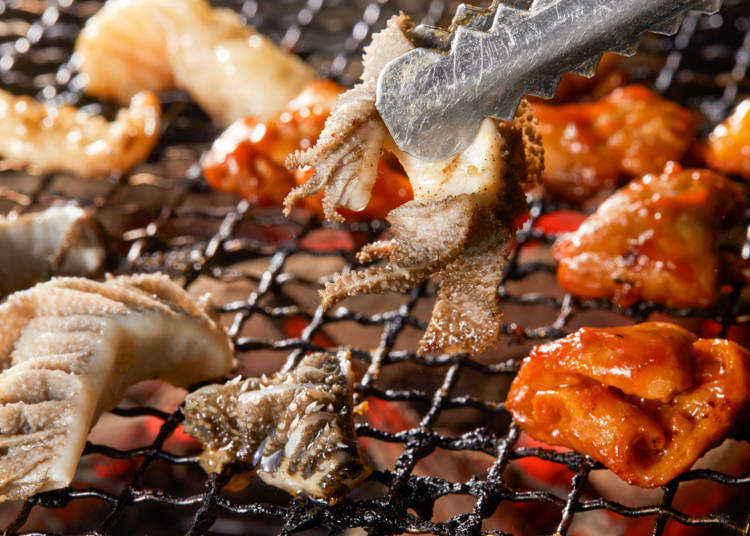
When you think of Japanese food, it’s most likely that sushi and ramen come to mind first, but have you ever heard of takoyaki? What about hormone, or kushikatsu? These are some of the crazy dishes that are most famous down in Western Japan, also known as Kansai. There are some incredibly tasty dishes just waiting to be discovered, but there are also some pretty weird dishes that might just take you by surprise!
So, what were the most surprising dishes for our interviewees traveling in Kyoto and Osaka?
(The following is based on the opinions of those interviewed)
- Table of Contents
-
- 1. Takoyaki Looks Cute and Tastes Great!
- 2. Is it Alive!? Okonomiyaki “as you like it”
- 3. Yuba: What’s it made of?
- 4. Konpeito: Colorful and cute!
- 5. No Double Dipping! Kushikatsu takes fried food to another level
- 6. Weirdly Good? Soft but Chewy ‘Hormone’
- 7. Kamo nasu: Is it really eggplant?
- 8. Basashi: Is it OK to eat this raw..?
- 9. “Taiko Manju” and other healthy fast foods
- 10. Mochi: There are so many kinds!
1. Takoyaki Looks Cute and Tastes Great!
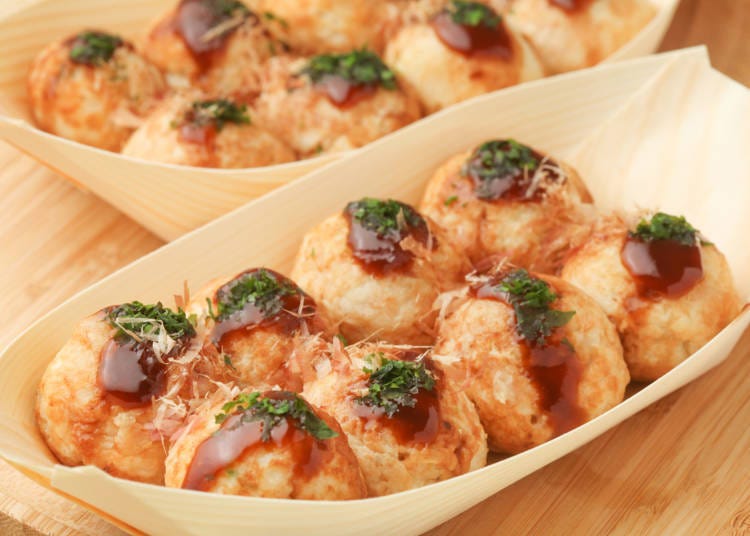
The most famous local cuisine of Osaka is Takoyaki. Takoyaki is known around the world now, but there was a time when it was translated as Octopus Balls. With a name like that, people would wonder what kind of dish is was? Our New Yorker interviewee thought Takoyaki looked cute the first time he saw it. I guess it might look cute after hearing Octopus Ball and seeing real Takoyaki.
When you put it in your mouth, the combination of the sauce and mayonnaise is plentiful, and the texture of the octopus is excellent! Only one word can describe it, and it is delicious! However, some would wonder where the octopus is? Because depending on the shop, the octopus can be tiny and hard to find. If you want to feel the presence of the octopus, we recommend looking at store reviews for shops with large octopus chunks.
2. Is it Alive!? Okonomiyaki “as you like it”
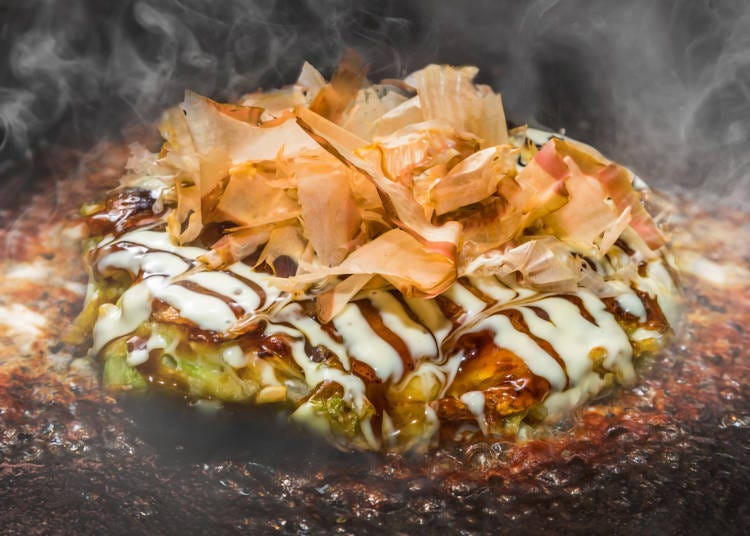
Many spots will cook okonomiyaki on a hotplate in front of you, but it’s also fairly normal to be given the ingredients so that you can cook it yourself! They’re usually made of egg, flour, and cabbage, with a number of fillings or toppings to choose from, one of which is bonito flakes. When our American interviewee saw the bonito flakes move on top of the okonomiyaki, it reminded him of odori-gui (eating raw seafood while it is still moving) and thought it was alive for a moment! Also, when the staff explained what bonito flakes were, they said it was fish flakes, which gave the impression that it would have a strong fish taste, which it doesn’t particularly. But it’s hard to imagine what kind of ingredients go inside okonomiyaki just from the name.
The first time our friend mustered his courage and took a bite, the rich flavor of the sauce and the juicy mixture of the vegetables and meat was a shocker. Another interesting point of okonomiyaki is the difference in cooking methods and ingredients for the Osaka style and Hiroshima style. Just as the name implies, okonomiyaki (literally meaning in Japanese, ‘cooked the way you like’ or ‘what you like’), there are so many different types of okonomiyaki depending on the restaurants. Some might be heavy, or not to your liking, kind of how the Osaka style and Hiroshima style is different. One could say it is sort of like finding the ramen you like. It’s up to luck, and that’s why our interviewee thought it was like playing roulette.
3. Yuba: What’s it made of?
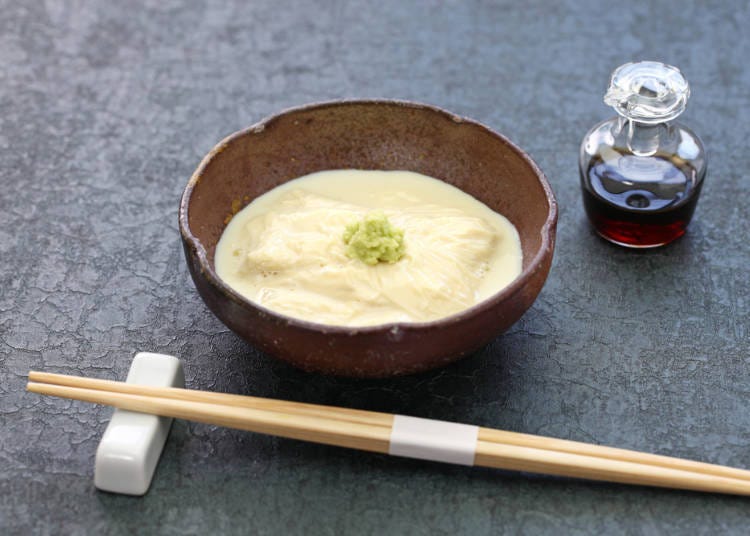
A Mexican interviewee in his 30s living in Osaka said he loves Japanese food and enjoys meals with his Japanese wife. His absolute favorite is something you might be hard-pressed to find elsewhere - yuba.
“When I first ate it, my impression was ‘I don’t know what it’s made of, but it’s delicious.’” Yuba is a thin skin produced when processing soy milk. Because soy milk is sold in Mexican supermarkets and are many dishes that use beans, the flavor of yuba fits with his tastes.
4. Konpeito: Colorful and cute!
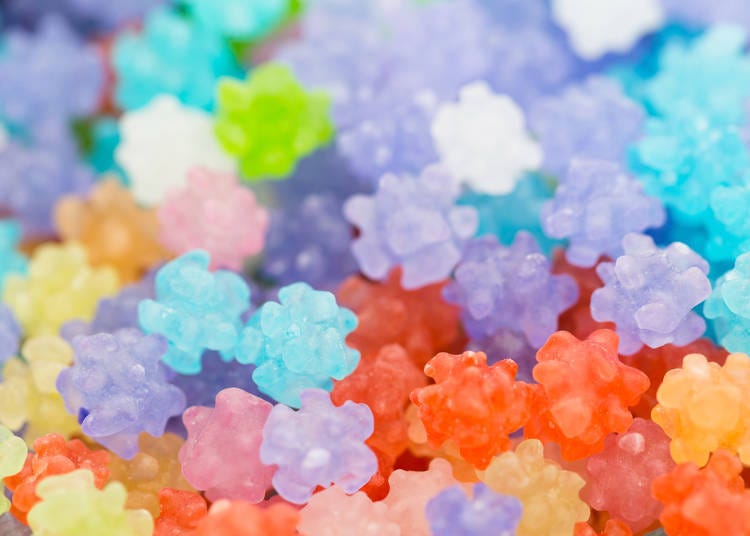
His wife mentioned that konpeito seemed to be a favorite souvenir among his Mexican friends. “It's popular because it's colorful and beautiful. I love the colors.” According to her, “Mexicans love sweets. Mexican sweets are so sweet that Japanese sweets that are not too sweet are popular.” (Try saying that three times fast!)
Kyoto has the only konpeito specialty store in Japan, selling seasonal varieties in cute sachets that are perfect for overseas souvenir-giving because they aren’t bulky and stay fresh for a long time.
5. No Double Dipping! Kushikatsu takes fried food to another level
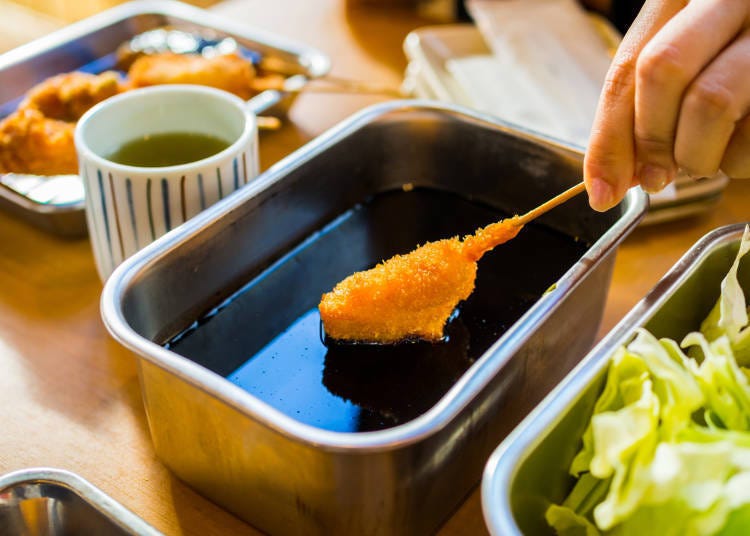
A famous deep-fried dish around the world is fried chicken. In that sense, kushikatsu isn’t as well-known as takoyaki or okonomiyaki. However, it’s definitely a street food that you can’t miss. Compared to other fried food, for some reason, kushikatsu just tastes better. It makes you wonder if they use a different type of oil because the crust isn’t that oily, and the meat is still juicy. Our New Yorker interviewee said that Japanese deep-fried food, including karaage, is delicious.
Our interviewee also gives his seal of approval to the sauce, which prohibits “double-dipping” and adds to the total flavor of kushikatsu. He said that in the States, there are many types of sauces used for various dishes, but the Japanese sauce has concentrated sweetness and umami to create a deep flavor that is just magnificent. In that sense, you can enjoy the deliciousness of the sauce in everything we have covered so far.
6. Weirdly Good? Soft but Chewy ‘Hormone’
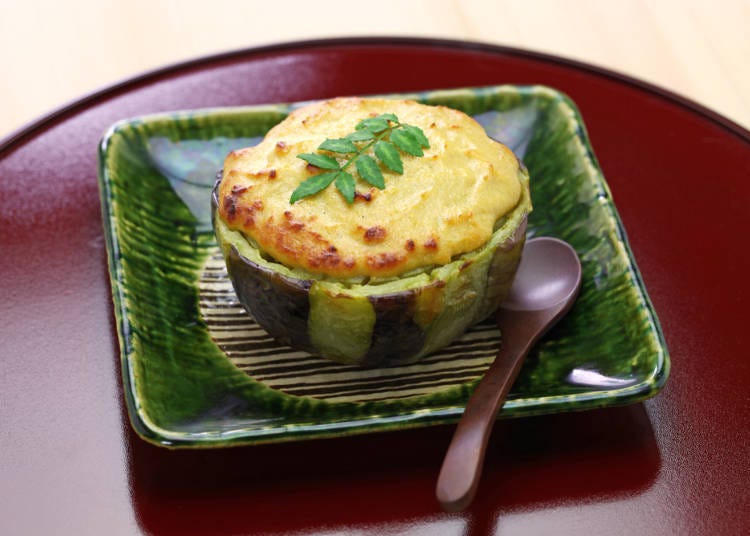
Now, this is a curious dish, because in English, ‘hormone’ has a very different meaning. In fact, when our American interviewee first came to Japan, he wondered how exactly people “are hormones.” Hormone dishes are made with beef and pork offal. Hormone dishes exist all over Japan, however there is a theory that the term hormone comes from the Osaka dialect “horu mono,” which means to “discard.” There are various ways to prepare hormone dishes such as stewing or boiling it, however in Osaka the most famous hormone dish is Hormone Yaki and it is grilled. We wondered how our New Yorker friend thought about eating hormone, where eating offal isn’t common in the northern part of the U.S.
He said, “The texture of hormone is interesting and depending on the part, it can be chewy, soft, or even like gum.” Just as he said, depending on the part, the texture is different, and that is one of the great things about hormone. Another nice factor of hormone is that it’s rich in vitamins, iron, and other nutrients. Once you get hooked on the texture, it’s over. The way hormone is flavored and prepared is different for every shop, it’s always fun going to different hormone shops to find the taste you like.
7. Kamo nasu: Is it really eggplant?

For our 20-year-old Russian interviewee living in Kyoto, her attention was caught by Kamo nasu. “When I ordered eggplant, it came out and I was surprised by the size and roundness.” She added, “The texture and taste are completely different from the usual taste.”
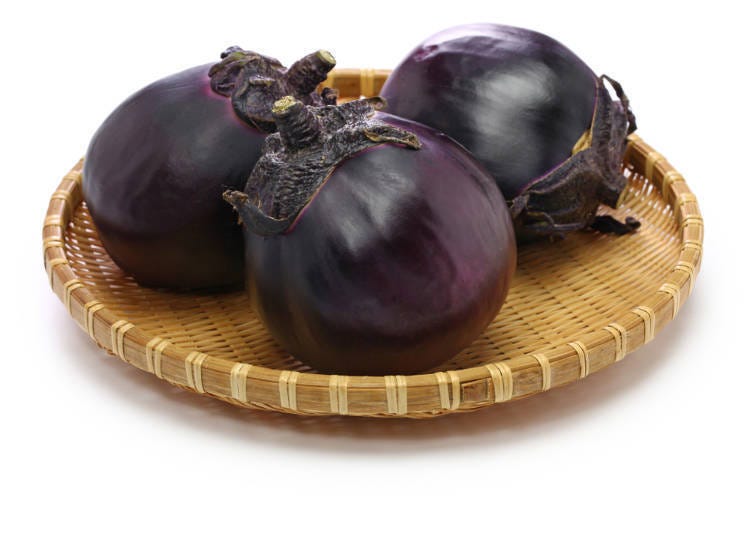
Kamo nasu is a traditional Kyoto vegetable grown mainly in Kamigamo. About 12-15cm in diameter, it’s stubbier and rounder than typical eggplant.
Kyoto izakayas often serve Kamo eggplant, and those seeing it for the first time may be surprised by its appearance. Kamo nasu is good for boiling or grilling because it’s firm and won’t easily break down. Adding a bit of oil enhances the flavor, and it goes well with steak.
8. Basashi: Is it OK to eat this raw..?
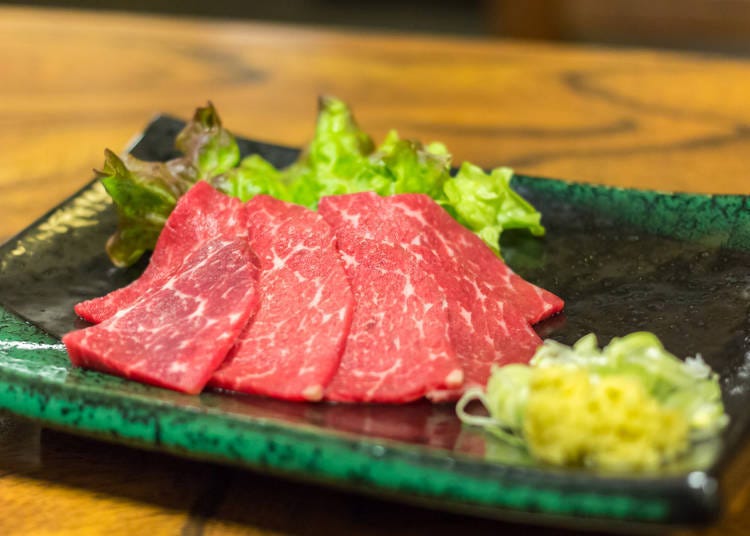
Our Russian interviewee was even more surprised by basashi. Otherwise known as horse sashimi, it is often featured on menus is Fushimi and Gion, and many foreigners may try raw horse for the first time in Kyoto.
She said, “Well, can you eat raw horse? I was surprised to eat it and a little conflicted...” In Russia, horse meat is eaten in some areas, but is served in pies, smoked products, and sausages rather than raw.
The idea of raw horse meat takes some getting used to, but we applaud her for stepping up to the challenge. She added, “I definitely thought it would have been better cooked!”
9. “Taiko Manju” and other healthy fast foods
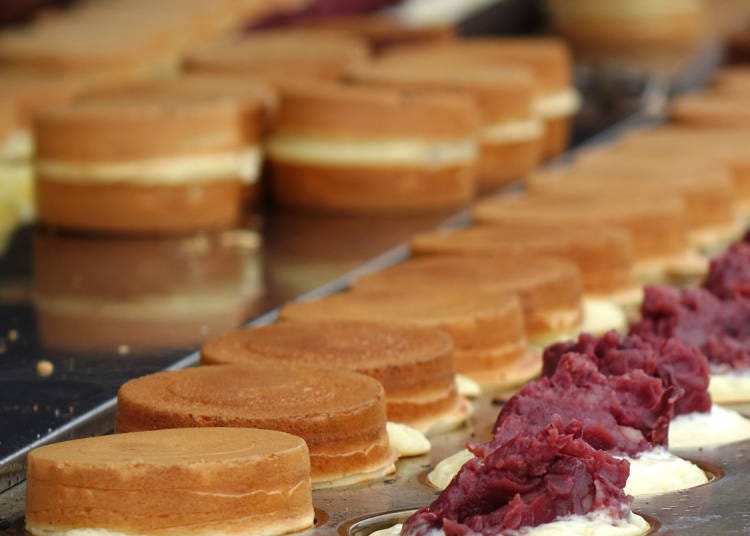
Taiko manju is a Japanese sweet that wraps red bean paste in a soft and fluffy bun. Depending on the region, it is called Imagawa yaki, Oban yaki, or Kaiten yaki, but it is a Japanese fast food sweet that is loved around the country. There are many shops that have an outdoor section with a special hotplate where they serve freshly cooked taiko manju.
Our New Yorker interviewee loves Taiko Manju and said, “It’s the perfect snack!” Anko (red bean paste) isn’t yet that widely known around the world like matcha, however, we strongly recommend trying it out when you visit Japan. Anko is made from azuki beans (red mung bean) and has lots of nutrient values such as protein, minerals, and polyphenol, so it makes this sweet healthy. If you come across it, give it a shot!
10. Mochi: There are so many kinds!
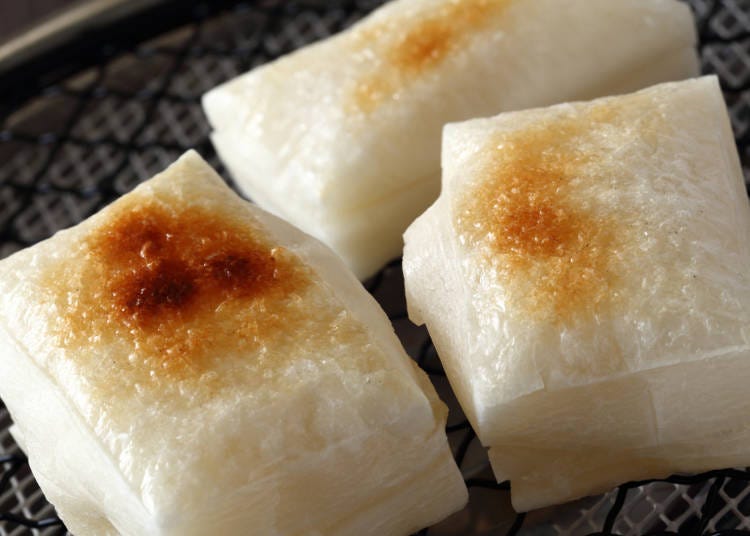
Finally, our 20-year-old German interviewee, who was visiting a Japanese friend was surprised by mochi. “Soy bean powder is actually sweet! I was surprised that there were so many types of rice cakes,” she said. “My favorite is yakimochi with peanut butter. I was pretty curious about how it’s made.”
Her curiosity took her places, and she found out the truth behind the mochi! “I thought it was made by a machine, so I was surprised to see the mochitsuki (manual mochi pounding)!” There is a mochi specialty store in Nishiki Market in Kyoto, where you can watch the mochitsuki and even participate when the store isn’t busy. It’s really a sight to behold, because it harks back to the more traditional Japanese ways of creating sweets and other specialties. You have a huge barrel of sticky white rice which you essentially just keep pounding at with a giant hammer until it becomes a paste! We recommend keeping an eye out for it in Kyoto or elsewhere on your travels.
So there you have it, some of the more weird and wonderful experiences overseas residents and tourists have had with Japanese cuisine. Overall, although some of them are pretty out there, trying as much “true Japanese food” as you can on your travels seriously adds to the overall experience. So, we recommend letting your inner foodie out and trying everything you can!
*Prices and options mentioned are subject to change.
*Unless stated otherwise, all prices include tax.
Popular Tours & Activitiess
Recommended places for you
-

Kambei Sannomiyahonten
Yakiniku
Kobe, Sannomiya, Kitano
-

Tenryu-ji Temple
Temples
Arashiyama, Uzumasa
-
Goods

Yoshida Gennojo-Roho Kyoto Buddhist Altars
Gift Shops
Nijo Castle, Kyoto Imperial Palace
-

Kanzenkoshitsuyakinikutabehodai Gyugyu Paradise Sannomiya
Yakiniku
Kobe, Sannomiya, Kitano
-

Jukuseiniku-to Namamottsuarera Nikubaru Italian Nikutaria Sannomiya
Izakaya
Kobe, Sannomiya, Kitano
-

ISHIDAYA Hanare
Yakiniku
Kobe, Sannomiya, Kitano
-

Everything You Need to Know About teamLab Biovortex Kyoto (2025 Insider Guide)
by: Wemmy Chau
-

New Way to Reach Koyasan! Ride Nankai's 'GRAN Tenku' for a Heavenly Journey
by: Guest Contributor
-

November Events in Kansai: Fun Festivals, Food, and Things to Do in Kyoto & Osaka
-
Ad

Experiencing Manga as Culture, Not Just Reading It: Expo 2025 with Rumiko Takahashi
-
Ad

Recharge and Relax with a Healing Getaway at Kamenoi Hotel Toba
-

Best Things to Do and See Around Kyoto & Osaka in September: Events and Festivals in Kansai
Inspiration for Accommodations
-

Spacious Family Hotel in Namba: 20 Comfortable Stays for Family Fun
-

Charming Hotels to Enjoy the Spectacular Views of Arashiyama's Autumn Leaves from Your Room
-

Experience Stunning Views of Osaka Castle from Private Spaces: Top Hotels Near Osaka Castle
-

Recommended by Visitors! Arashiyama's Best-Rated Hotels
-

Family-Friendly Universal Studios Japan Hotel with Excellent Access
-

Enjoy a Comfortable Stay in Osaka! 10 Hotels with Convenient Airport Shuttle Services
-

Top 10 Recommended Hotels Near Namba Station with Great Access
-

Enjoy Night Views from Your Room! Recommended Hotels in Namba Area
-

Japan's Bath Culture: Tips You Should Know!
-

Inside Kyoto's Spectacular Sanjusangen-do Temple with 1,000 Gold Statues
-

Ebi Fry (Japanese Fried Shrimp) Recipe: Perfect Harmony Of Crunchy Breading and Super Plump Shrimp (Video)
-

JR Edition: Visit all of Tokyo in one Day with the Tokyo Metropolitan District Pass!
-

Dining in Nara: 9 Local Foods & Restaurants You Can't Miss
by: WESTPLAN
-

Dining in Osaka: Best Restaurants for Yakiniku, Sushi, Okonomiyaki & More
by: WESTPLAN
- #best gourmet Osaka
- #things to do Osaka
- #what to do in kyoto
- #what to bring to japan
- #best gourmet Kyoto
- #new years in Osaka
- #what to buy in nanba
- #Visiting Osaka
- #onsen tattoo friendly arima
- #daiso
- #Visiting Kyoto
- #best japanese soft drinks
- #japanese fashion culture
- #japanese convenience store snacks
- #japanese nail trends












